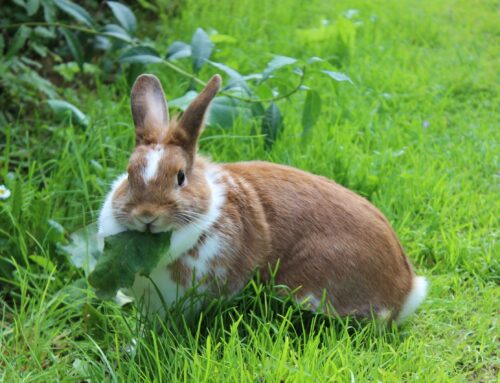As we enter February, many of us may be putting our New Year’s resolutions to the back of our minds. Maybe this is the perfect opportunity to share the weight loss motivation with your pet? In fact, actually forming a team with your pet, to both lose weight together may help – the extra walkies will have dual purpose!
Obesity is a serious disease which can be avoided, unlike many other diseases. It affects both humans and animals in a very similar way.
Obesity is caused when a pet’s intake of calories (Kcal) is more than the energy they are using for exercise or body maintenance (circulation, digestion etc).
Kcal in = Kcal out = maintain same weight
Kcal in > Kcal out = increase in weight
That said, other factors such as their sex, neutering, exercise levels, concurrent disease and medications will usually have an impact too.
How do I know if my pet needs to lose weight?
Knowing whether your pet is overweight is often difficult to tell. To check if your pet is overweight, we recommend using a body condition scoring system. This system involves comparing your pet’s shape to a picture – we can show you these systems in practice, or you can use the excellent ones from the PFMA here.
Can I weigh my pet at home?
Seeing your pet every day makes any gradual increases in weight hard to see. During lockdown, we are spending more time indoors with our pets and may be giving them more treats, the same way we often end up taking more trips to the fridge when working from home! Weighing your pets at home is a useful indicator to check whether you have been feeding your pet too many extra kcals.
Here are a few simple steps to follow if you plan to weigh your pet at home.
- Stand on your bathroom scales and record your weight (don’t worry, you don’t need to tell anyone else!)
- Step off the scales so they can reset
- Step back on, but this time holding your pet securely but safely
- Record the weight of you+pet, and subtract from it the weight of just you. The answer is how much your pet weighs on their own.
- Keep a record – as often gradual changes over time are more reliable than “one-off” readings. Perhaps you could keep a pet health diary with vaccine, worm and flea reminders – and their weight every week?
- Don’t weigh your pet more than once a week unless one of the vets has said to do so – because weight fluctuates day by day, it’s an easy way to get depressed (or overconfident!).
What effect does being overweight and obesity have on my pet’s body systems?
Being overweight or obese increases the likelihood of many other diseases. Taking control of your pet’s weight is so important as although obesity is reversible, some of the diseases associated with obesity are not.
Musculoskeletal system
Obesity puts extra pressure on joints when walking, jumping, lying down or sitting in certain positions. Putting excessive pressure through specific joints for long periods can make daily tasks, such as sleeping or moving to get food, very painful.
Cardiovascular system
Obesity affects your pet’s blood vessels. The heart has to work much harder to push the blood around a larger body. Blood pressure will increase. Heart dysfunction is more likely.
Endocrine system
Too much fat and carbohydrate in their diet means the pancreas has to work much harder to regulate blood glucose (sugar) levels, which can cause pancreatitis. Obesity increases the likelihood of your pet suffering from diabetes mellitus.
Respiratory System
Excessive fat can lead to respiratory distress, making movements and even sleeping uncomfortable. Excessive fat can restrict the lungs making it more difficult for the lungs to inflate and therefore harder to get the oxygen into the body.
How can I help my pet lose weight using diet?
There are many specialised, calorie-controlled diets available. The diet should include micronutrients (vitamins and minerals) at the required concentrations, a specific amount of kcals and a controlled amount of carbohydrate, fat and protein. We can create personalised diet plans if you would like one. Any change in diet should be a gradual process to avoid any gastrointestinal side effects. If you do not want to change your pet’s food, you should reduce the volume of food given – the percent reduction in food will depend on how much weight the pet needs to lose.
How can I help my pet lose weight using exercise?
To lose weight, you can increase the amount of kcals burnt. Increasing the amount of exercise your pet does is a brilliant way to increase the energy expenditure of your pet. You can do this by increasing the number of walks per day or increasing the length of the walks – but remember to build up slowly if you don’t want them in with us with strains and sprains. Alternatively, you could introduce new, different exercise types such as swimming.
You will also find that once your pet begins to lose weight, they actually enjoy exercising more and will naturally get up and move around more often because of the reduced pain associated with movement and improved cardiovascular fitness. Increasing exercise is also great because it stimulates muscle growth – muscle is more metabolically active so uses more calories.
How can I help my pet lose weight using a holistic plan?
The most effective and sustainable method for weight loss involves a calorie deficit caused by reduced calories and increased exercise. Just one thing though… don’t try and take the weight off them too fast! Usually, 1% of bodyweight per week is roughly right, unless the vet advises otherwise. Too fast, and there can be complications such as liver issues. Too slow, and you leave them at risk fo disease. Like Goldilocks, go for just right!
So, set goals for your pet! Having a team member on board may help boost your motivation and you can tackle your goals together.



